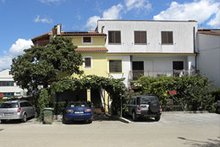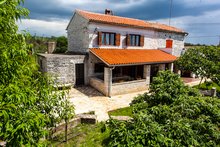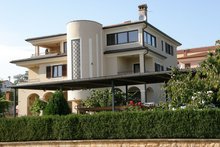History
Rovinj was already a settlement of Illyrian tribes before being captured by the Romans, who called it Arupinium or Mons Rubineus, and later Ruginium and Ruvinium. Built on an island close to the coast, it was connected with the mainland in 1763 by filling in the channel.
It became part of the Byzantine empire, then in the sixth century part of the Exarchate of Ravenna and in 788 part of the Frankish empire. Then it came under the rule of different feudal lords for several centuries. From 1209 it was ruled by the Aquileian patriarch.
From 1283 to 1797 Rovinj was one of the most important towns of Istria under the Republic of Venice. The city was fortified by two rows of walls with three town gates. The remaining town walls date from this period. Close to the pier one can find the old town gate Balbi's Arch, dating from 1680, and a late-Renaissance clock tower. The city got its statutes in 1531.
After the fall of Venice and the Napoleonic interlude, Rovinj was part of the Austrian Empire until World War I. Then it belonged to Italy from 1918 to 1947, when it was ceded to SR Croatia within SFR Yugoslavia.
Cultural and Historical sites
The Old Town is where life started on what used to be an island secured by medieval walls. The city had seven gates, three of which have been preserved to this day: The Gate of St. Benedict, The Portica and The Gate of the Holy Cross. The first archeological traces of life date back to the Bronze Age, and the old city started developing in the 3rd century. The limited space conditioned the construction of narrow houses, narrow streets and small squares. It's an unique place to visit.
The largest monument in the city, the Church of St. Euphemia is a Venetian Baroque building restored between the 1725 and 1736. The bell tower was designed by the Milanese architect Alessandro Monopola, a replica of the Church of St. Mark in Venice. The tower construction started in 1651 and lasted 26 years. On top of the tower there is a large copper statue of St. Euphemia that was set in 1758 after the wooden statue was destroyed by a thunder. There is a wonderful view from the tower accessible from inside the church.
The town clock and a small fountain are located on the main town square. The town clock once represented the tower on the south corner of the former town walls. Built in the 12th century, the tower was extended several times. The town clock with its Venetian lion, the symbol of Serenissima dating back to mid-19th century, was situated on the town gate fort near the Califfi Palace.
| Tweeter |
























